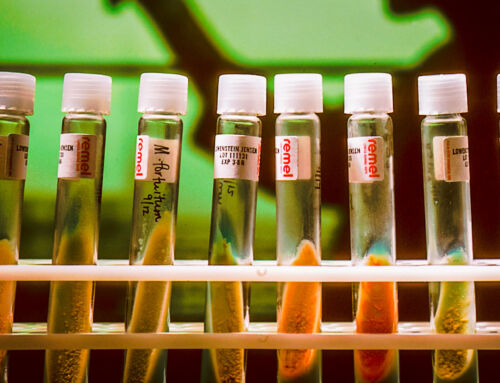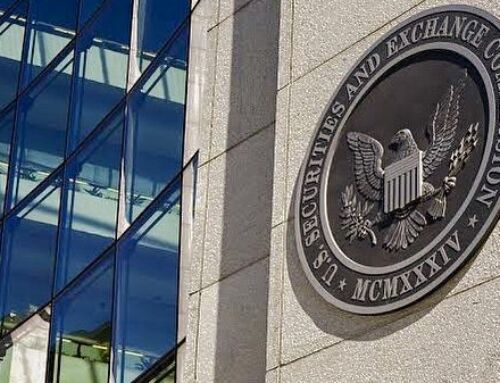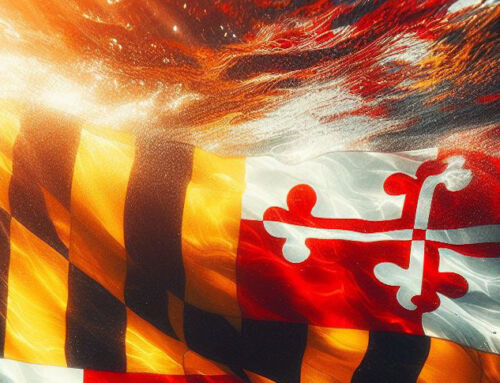View by Topic
Recent Articles
-
Congress Blocks California’s Gasoline Car BanSaturday, May 31st, 2025
-
EPA Will Keep Current Limits for “Forever Chemicals” in Drinking WaterSaturday, May 24th, 2025
-
Court Indefinitely Pauses SEC Climate Rule LitigationSaturday, May 17th, 2025
-
Maryland is About to Regulate Mold But is the Cart Before the HorseSaturday, May 10th, 2025
View by Month/Year
“Green Building Law Update” Headlines
Recent Articles & News from
Stuart Kaplow’s blog
at GreenBuildingLawUpdate.com
- EPA Will Keep Current Limits for “Forever Chemicals” in Drinking Water May 25, 2025
- Court Indefinitely Pauses SEC Climate Rule Litigation May 18, 2025
- Maryland is About to Regulate Mold: But is the Cart Before the Horse? May 11, 2025
- BEPS Redux: The Most Far Reaching Environmental Legislation of the 2025 Maryland General Assembly May 4, 2025
Subscribe to the Green Building Law Update!
Stuart Kaplow brings his expertise and extensive experience to the table with his unique digital publication, "Green Building Law Update". Subscribers receive regular updates to keep them informed about important issues surrounding Environmental Law, Green Building & Real Estate Law, as well as the emerging demand for Environmental Social Governance (ESG).
Get fresh content through the lense of Stuart Kaplow's cutting-edge expertise, innovative commentary and insider perspective. Don't miss another issue! Subscribe below.
Maryland is the 1st State to Adopt the International Green Construction Code
The Maryland legislature has approved the International Green Construction Code™ making Maryland the first state in the country to authorize use of the IgCC for private and public construction.
House Bill 972 sponsored by Delegate Dana Stein garnering wide support, from the real estate industry to environmental groups, passing the Senate unanimously and the House of Delegates with a 121 to 18 majority.
It is not surprising the IgCC found Maryland fertile ground. Relative to its population, Maryland has more LEED® projects than any other state. The first certified LEED Platinum building was in Maryland. Maryland was one of the first states to offer a green building tax credit in 2001. Today, 14 local governments in Maryland have enacted a LEED based green building initiative, including several that have mandatory green building laws imposed on private building. Maryland will now be the first state to enable local governments to implement the IgCC as a voluntarycompliance alternative.
Demand for green building
Demand for green building remains strong. McGraw Hill Construction reported that nationwide more than 35% of new nonresidential construction activity in 2010 was green. There continues to be strong market data showing both significant effective rental premiums and also much faster absorption, as well as higher sale prices per square foot, for green building versus comparable non green.
Rising energy prices, government incentives and enhanced brand image are regularly identified as motivators driving green building to an ever larger market share in 2011.
Buildings have a surprisingly large impact on the natural environment. With energy use being the source of about 70% of Greenhouse Gas emissions and buildings representing up to 48% of total energy use, controlling building energy use is key not only to reducing costs, but also to advantaging the environment. Controlling building energy use is the only method of reducing GHG emissions that is currently cost effective or is likely to be so into the near to mid future. And green building is the means to that end. It is well documented that green buildings can reduce energy use by up to 50%, reduce CO2 emissions by as much as 39%, use as much as 40% less potable water, and can eliminate 70% of solid waste.
But there remains no single accepted definition of green building. The U.S. Green Building Council’s LEED voluntary third party certification program is by far the most widely utilized standard for green building in this country and arguably the now nationally accepted benchmark, if not the dominant green building program in the world. LEED gave us the words and the standards to articulate what a green building is.
LEED will survive and thrive
The environmental industrial complex makes the case that it’s not a choice between green building codes or the voluntary “above code” LEED green building rating system. In response to the concern that with USGBC participating in the creation of the IgCC, it is killing the goose that lays the golden eggs, the hollow sounding retort is only that mandatory baseline building codes and the third party rating systems, like LEED, work together. The surreply is that with a minimum code establishing the floor of what green building is, USGBC and the green building industry is at the ceiling with the freedom to go further and raise that ceiling higher, blazing new trails toward net zero energy building and onto a truly regenerative future.
Make no mistake, today with more than 1.4 Billion square feet of LEED certified building and USGBC now certifying more than 1.5 Million square feet a day, even with the advent of the IgCC, the LEED brand is here to stay. Moreover, many government programs, including GSA new construction are tied to LEED; at least until the federal government looks to reduce the cost of building green (and of course, GSA leasing is tied to Energy Star). Having already changed the culture of the real estate industry, it is the aim of many inside USGBC that LEED be smaller in terms of number of projects and return to 20% of new construction starts, “the market penetration expected and desired for the system.”
Those who suggest the IgCC will result in significant reduction in market share for LEED are wrong missing that green building is so fast growing that such would be akin to King Canute seated on his throne on the seashore commanding the tides of the sea to go back.
However, the lines of demarcation are not yet clear. USGBC opposed the Maryland bill, despite that the introduction and enactment of the legislation was an advocacy effort of the USGBC Maryland chapter.
The IGCC
The IgCC is a collaborative effort of the International Code Council, the USGBC, the American Institute of Architects, ASTM International, the American Society of Heating, Refrigerating and Air-Conditioning Engineers, and the Illuminating Engineering Society to be administered by local code officials as an overlay on existing construction and energy codes in the ICC codes family (including the International Building Code and International Energy Conservation Code).
The IgCC is available for download without charge at www.iccsafe.org. The IgCC provides model code language, to be adopted by local governments as an overlay to existing codes working in tandem with the administrative requirements of other adopted codes, to establish “baseline regulations for new and existing buildings related to energy conservation, water efficiency, building owner responsibilities, site impacts, building waste, and materials” and other matters.
By way of example the IgCC version 2.0 requires energy performance must be 30% better than the minimum requirements of the 2006 International Energy Conservation Code. The overlay code requires that plumbing fixture and fitting flow rates be reduced by 20% compared to the current International Plumbing Code. The IgCC also mandates commissioning of mechanical systems. And this new code shifts many responsibilities for building green from the design professional to the owner to be consistent with traditional code requirements.
Using Table 302.1 in the IgCC, governments can ramp up or require enhanced performance in many areas, including more stringent material resource and indoor environmental quality provisions and enhanced energy and water performance.
Additionally, each government enacts the IgCC indicating a number between zero and 14 as the minimum number of project electives, from the list of 60 electives in Table 303.1, including Brownfield redevelopment, reducing light pollution, use of non-potable water, and others, that must be complied with by each project.
The future of the IGCC
The new Maryland law is effective March 1, 2012. While use of the IgCC will be as a voluntary alternative compliance path by a developer in a local jurisdiction that has elected to adopt the IgCC, this makes it necessary that owners of buildings to be constructed in Maryland next year now consider designing to the IgCC. And the date allows code officials the time necessary to review and amend the IgCC to be suitable for each jurisdiction.
The new law expressly enables the state and local government to adopt “the most recent edition” of the IgCC and while the current edition is version 2.0 released in November 2010, in an effort to mirror the approval process and triennial code development schedule of the ICC codes, providing continuous refinement to the IgCC, the 2012 version of the IgCC will be published in early 2012.
There are updates to v2.0 including, possibly most significantly, building envelope requirements including wall and ceiling insulation and fenestration solar heat gain coefficients will be 10 percent more stringent than the requirements of the 2012 IECC. In one of a series of other modest updates for most projects, stormwater management is no longer a jurisdictional option and is now mandatory. Public comment is being accepted on the proposed IgCC 2012 through August 12, 2011. Final action on all 2012 green code changes will take place on November 6, 2011.
The IgCC creates a regulatory framework that will raise the floor of green building (above a minimum building code), but not reach the level of LEED as that voluntary rating system raising the ceiling. Very appealing is that (unless a local government elects otherwise) as a construction code, the IgCC offers certainty at the time of permit issuance and concluding the construction is complete with final inspections (i.e., none of the vagueness of a third party approval, no post construction energy and water usage reporting, no possibility of decertification, etc.). And as USGBC readies the next version of LEED, pushing the envelope with higher thresholds for energy reduction, water savings, and the like, raising the ceiling; the floor of the IgCC may be even more appealing.
An IgCC constructed building should be a faster to erect, will have lower first costs, and afford greater certainty; .. so, more green buildings, including significantly, more of those buildings pursuing LEED certification.
Standard 189.1
As enacted in Maryland, the IgCC includes the alternative for a local government to utilize the new American Society of Heating, Refrigerating and Air-Conditioning Engineers (ASHRAE) Standard 189.1 (2009) for the design of high performance green buildings (except low rise residential). The Standard is included within the IgCC and its adoption can occur as a jurisdiction enacts its local ordinance.
The energy efficiency goal of Standard 189.1 provides for a significant energy reduction over that in ANSI/ASHRAE/IESNA Standard 90.1-2007. It offers a broader scope than Standard 90.1 and is intended to provide minimum requirements for the siting, design and construction of high performance, green buildings. In late 2010, the U.S. Army incorporated 189.1 as its standard for green building.
Gain a competitive advantage
Beyond simply an effort to capture the dollars available in advantaging this market segment, many believe that a voluntary, non mandatory approach to environmental protection is the best hope for stewardship of our planet; hence the broad brand and wide market share acceptance of LEED. Many land owners also believe that burdening owners of terra firma with yet another government mandate is wrong and will not be efficacious. The government enactment of the IgCC as a voluntary option for developers of the land (as adopted in Maryland) is admittedly not a pure voluntary market driven effort, but seeks to strike a balance trending toward stewardship of our planet in Maryland through voluntary green building.
The market shift to green building has been dramatic and a bright spot in an otherwise tough economy. Green building will soon be the norm and anything else will be substandard. In an effort to comply with government mandates and to capture competitive advantages, it is now necessary to evaluate what standard to construct or retrofit a building to, including whether to build to the IgCC or to pursue LEED certification (or both).
If we can assist you in seeing the opportunities and gaining a competitive advantage in green building please feel free to contact Stuart Kaplow at skaplow@stuartkaplow.com.









